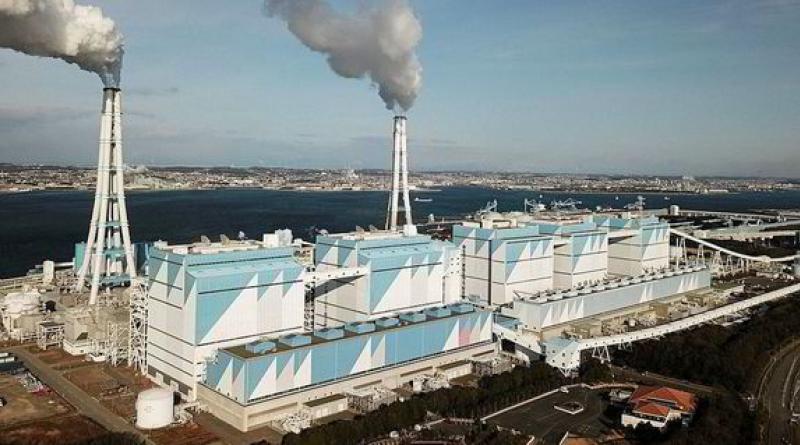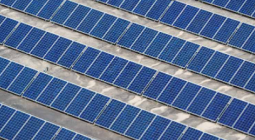‘Crazy, wasteful greenwash’: Japan to spend $242m on mixing hydrogen-derived ammonia with coal at power plants

Japanese power generator JERA will contribute a further $150m to the two demonstration projects, which have been labelled as 'nuts' by one hydrogen expert
The Japanese government is to spend ¥27.9bn ($242m) on subsidies for two demonstration projects aiming to burn at least 50% ammonia (produced from hydrogen) with coal at power plants by 2029.
Japan’s largest power generator JERA will invest a further ¥17.3bn ($150m) in the ¥45.2bn ($392m) emissions-reducing projects.
Last year, JERA — a joint venture between electricity suppliers Tokyo Electric Power and Chubu Electric Power — began adding small amounts of ammonia to a 1GW unit at its 4.1GW Hekinan coal-fired power plant in central Japan as part of a plan to achieve a 20% ammonia co-firing by 2025. Under the new funding, JERA and partner IHI Corp plan to raise this rate to 50% by March 2029.
According to Recharge calculations, based on the average coal-fired plant capacity factor of 53.5%, this would require 1.2 million tonnes of ammonia per year, almost 0.7% of the current annual global supply.
The second project aims to achieve the same level of co-firing at two unidentified power plants with different boiler types produced by Mitsubishi Heavy Industries, also by March 2029.
Ammonia, which is mainly used today for fertiliser and chemicals production, is currently produced by combining grey hydrogen derived from unabated fossil fuels with nitrogen from the air in an energy-intensive process known as Haber-Bosch. JERA does not state whether the hydrogen used for its ammonia will be grey, blue (grey but with carbon capture and storage) or green (derived by using renewable energy to split water molecules into hydrogen and oxygen).
Burning ammonia (NH3) does not produce carbon dioxide, but does result in substantial emissions of nitrous oxide (NOx), which is 298 times more powerful a greenhouse gas than CO2 — although these emissions can be captured in the flue gas with commercially available technology.
Although it is possible to produce ammonia from green hydrogen and power the Haber-Bosch process with renewables, such “green ammonia” barely exists outside of laboratories and pilot projects.
In fact, global ammonia production of about 176 million tonnes a year results in about 620 million tonnes of CO2 annually, according to the International Energy Agency (IEA) — roughly 1.7% of global emissions.
Replacing this “grey ammonia” with the green variety would therefore be hugely beneficial to the planet, but would require enormous amounts of renewables.
According to Recharge calculations, each tonne of green ammonia would require 8.85MWh of renewable energy to produce the green hydrogen required, and a further 5.53MWh to power the Haber Bosch process with electricity alone. So just replacing today's grey ammonia with green would require 2,530 terawatt hours (TWh) of renewable energy — 30% of the global renewables supply (8,300TWh) expected by the IEA in 2021.
Yet some countries, such as Japan and South Korea, as well as the shipping industry, are looking to increase the demand for green ammonia by using it as a fuel, largely because it is easier to transport than hydrogen and contains far more energy by volume.
Yet while a tonne of green ammonia requires 14.38MWh to produce, it only generates the equivalent of 5.16MWh when burned, which reduces to 1.96MWh in a coal-fired power plant when presuming a steam turbine generator efficiency of 38%, making it an incredibly inefficient method to produce electricity.
Japan is interested in importing large amounts of hydrogen and ammonia as part of its goal of reaching net-zero emissions by 2050 simply because the island nation does not have a lot of alternatives — it does not have a lot of available land to produce wind and solar power, and its isolated position and deep surrounding waters makes it difficult to import electricity via cables.
But Paul Martin, a co-founder of the Hydrogen Science Coalition, says that the $392m plan is “wasteful greenwash” and “nuts”.
“The Japanese are clearly in deep trouble in a decarbonized future and they are desperately grasping at straws to solve their energy import problems — but ammonia? It'll be at least five times the cost, per joule, of the energy their economic competitors use to fuel their economies,” he wrote in a LinkedIn post.
“The use of ammonia as a fuel is possible, but for stationary applications like power plants to be used more than occasionally as an emergency backup fuel, it's highly questionable. Feeding it as a co-feed to inefficient coal plants? That's just crazy.”
He adds that it would be logical to produce ammonia from green hydrogen “in places with high capacity factor renewables and no local electrical market”.
“But it should be used to replace black [ie, grey] ammonia, which is all you can buy today — it should NOT be wasted as a fuel!”
JERA, along with Tepco and fossil-fuel-focused engineering firm Chiyoda, will also invest a further ¥24bn — ¥20bn of which will be provided by the Japanese government — to develop new ammonia synthesis catalysts to improve on the efficiency of the current catalysts used in the Haber Bosch process.
By





